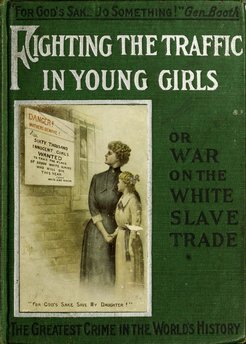The transnational criminal law regime on women trafficking (1870–1921): a transatlantic perspective on criminal selectivity
Forschungsprojekt

The white slave trade – trata de blancas in Latin America – became an issue of transnational criminal law from the 1870s onwards. In various international arenas such as networks and congresses, manifold actors – governmental as well as non-state and ‘private’, associations and movements – developed a regime that specifically dealt with the trafficking of women and also extended to Latin America. The project explores the history of human trafficking from the angle of a transnational criminal law regime, focusing on the transatlantic dimension and applying the concept of criminal selectivity. Following this transnational logic, the project aims to clarify the role of Latin American countries and their specific interests as vital actors and not just recipients of European criminal law. The study focuses on the Argentina (and, to some extent, Brazil) and Germany (and, to some extent, Austria) and therefore is conceptualised as a comparative case study of the Global South and Global North. Buenos Aires, Argentina, was considered a haven for white slavers because it had a system of municipally regulated prostitution from 1875 without national control. Although the conferences and conventions on women trafficking are of prime interest to reconstruct transnational criminal law, the project not only (dogmatically) reconstructs the provisions and norms and their implementation in domestic criminal law but also analyses the respective narratives, labels and modes of criminalisation that concerned criminal transboundary practices (‘kidnapping’, ‘trading’, ‘procuring’, ‘sexual exploitation’), the criminals (‘professional organised criminals’) and the victims (‘white women’). This, to some extent, relies on social and gender history approaches, though it does not aim to present a social or gender history of the transatlantic women trafficking. The focus of the research is on the use and impact of norms, narratives, labels and criminalisation processes of the transnational criminal law regime that dealt with women trafficking in the interplay of the international and domestic levels. The analysis includes:
- crime restricted to the trafficking of Mädchen, i.e. female minors; focus on agencies that recruited and transferred young women
- exclusion of females from other ‘ethnic’ groups (indigenous, black etc.); exclusion of male victims
- under-criminalsation of traffickers (men) and procurers
- over-criminalisation of individual women under charges of prostitution or sexual disease











